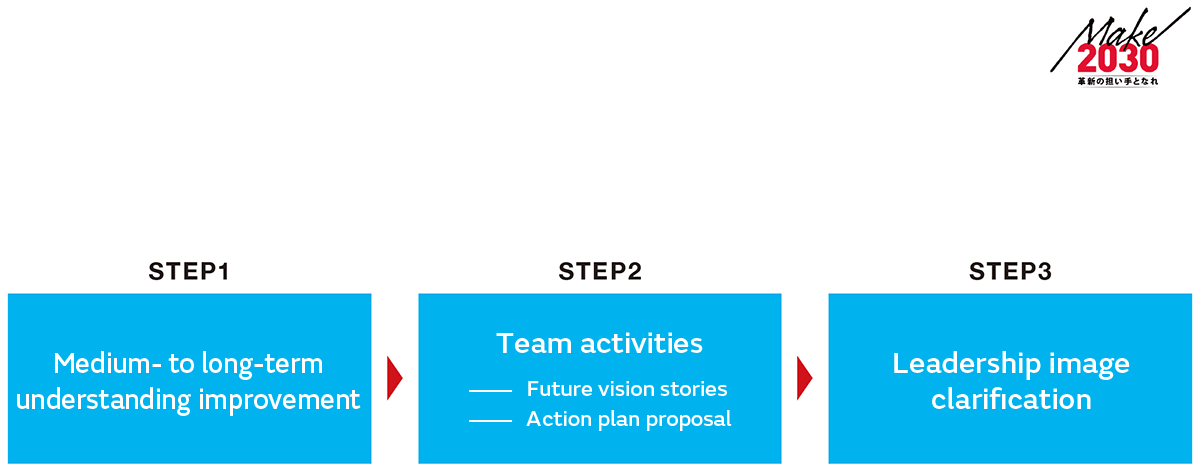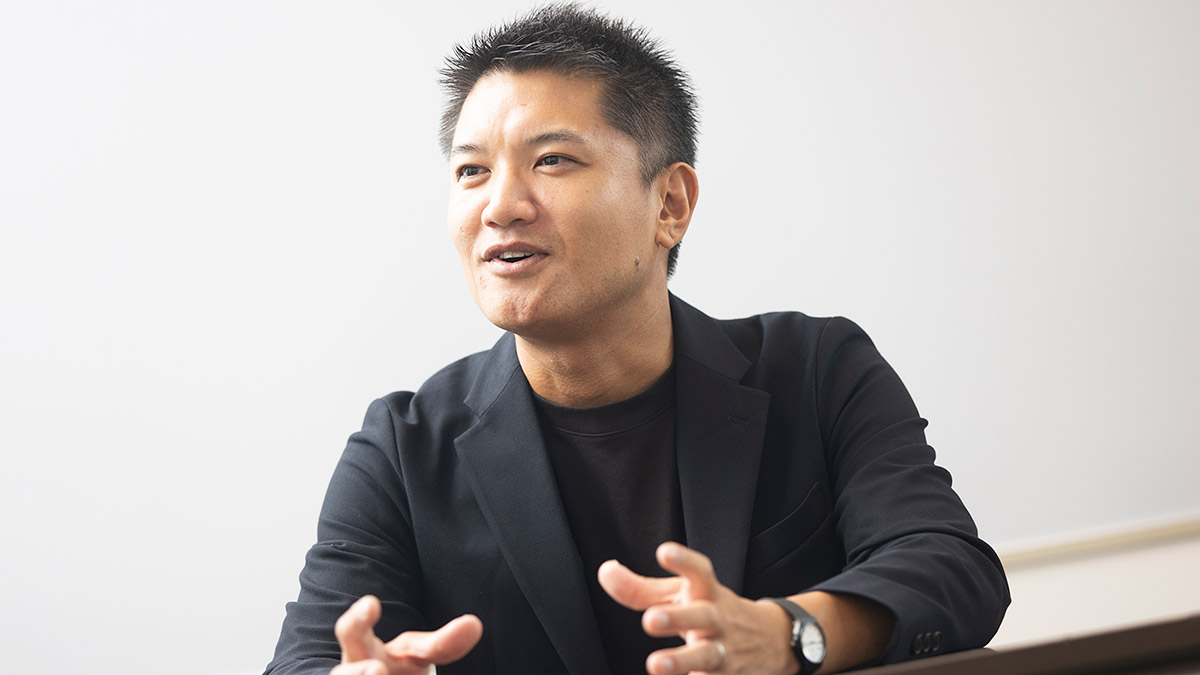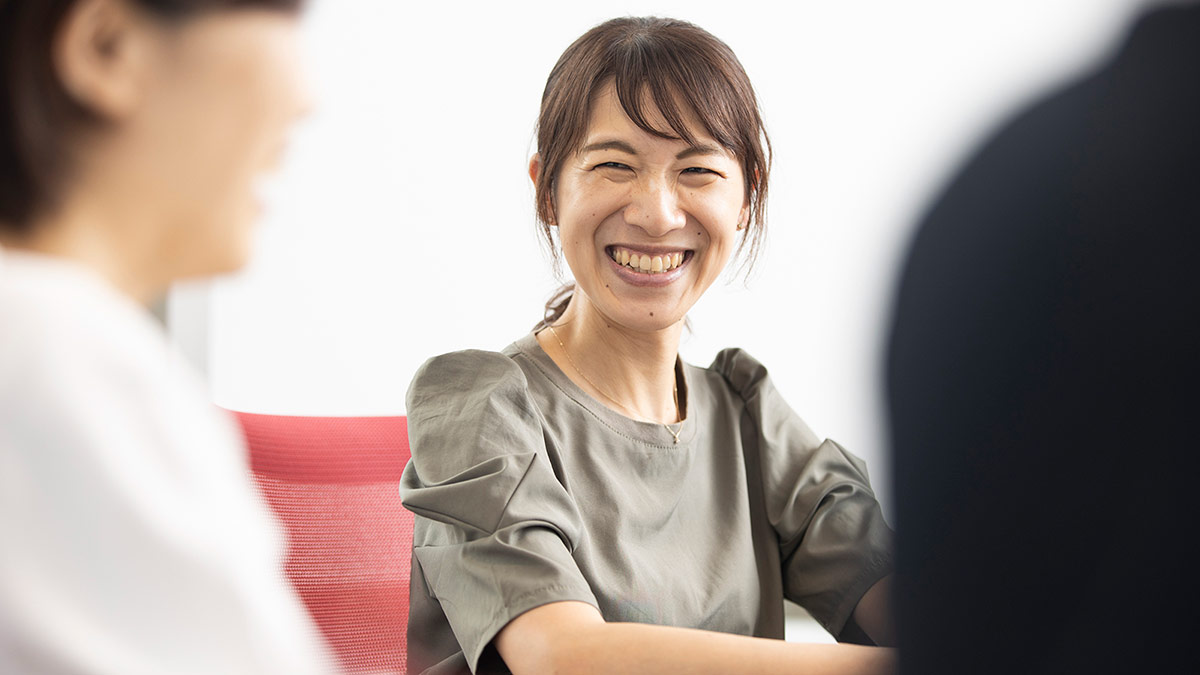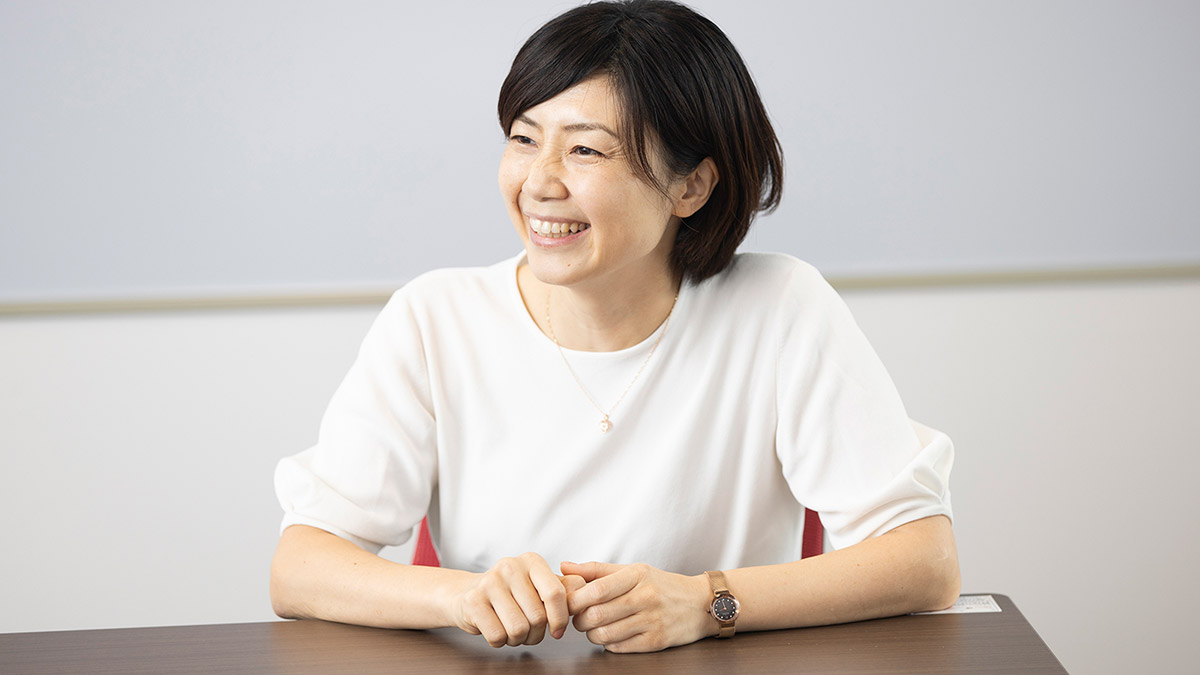Human resource development × muRata
How To Cultivate the Mindset Necessary To Be an Innovation Leader (Part 2)
INDEX
3. Team discussions became lively as participants revealed their candid opinions
3. Team discussions became lively as participants revealed their candid opinions
In step 2 of the human resource development program, the 130 participants were split into 27 teams and formed model management teams. Each team began by refining their insights about the future, developing their own hypotheses about change, and then working on a "future vision story" that verbalizes and visualizes the future.

Moriyasu and Nakajima, who were placed on the same team, recalled that, as the team was composed of members from different departments and locations, it was difficult to meet in person regularly, so discussions did not progress smoothly.
Moriyasu: "Furthermore, everyone on the team was also busy with their own work, making it difficult to take time out of our schedules. As time was slowly running out, we decided to hold a two-day retreat for all members."

Nakajima: "The retreat completely changed everything. While we had agreed on a schedule and tasks to some extent, the most important thing was that everyone began by sharing their candid opinions, including their concerns and ambitions for the project. This allowed discussion to flow more freely about how to solve the issues, and what we needed to change."

Haraguchi: "Speaking candidly was also something that our team was aware of. The members all had different backgrounds, and all envisioned the future differently, so we were faced with the task of how to narrow down themes and increase motivation. To achieve that, we met in person many times, and built a relationship that allowed us to speak openly and share opinions. As a result, we were able to settle on a theme that everyone agreed with, and work on it in earnest. Objectively speaking, I believe that this teambuilding exercise went smoothly, and the successful experience boosted our confidence significantly."

Shuto: "In our team, members' personalities began to come out as discussions progressed, and I think that the teambuilding went smoothly. However, at some point I ended up in a leader-type position, and I was a bit surprised when the other people on the team turned to me and asked, 'What are you actually interested in?' From that point on, I was able to seriously engage with what I really wanted to do, and spend a meaningful time in which everyone was able to voice their opinions."

4. Training is necessary for imagining the future
In addition to the team discussions, participants engaged in fieldwork both within the company and elsewhere in order to gain new perspectives as they worked on drawing up an action plan for the final presentation session.
Moriyasu: "The main purpose of the 'future vision story' was to set 'Murata' aside temporarily and imagine the future with creative freedom. In this regard, we approached over 10 companies and conducted a series of interviews on human resource and career development to gain new perspectives and ideas."
Nakajima: "Make2030 gave us the push we needed to contact other companies and speak to them about their issues, finding out things we wouldn't normally get to hear, so it was an invaluable experience. However, connecting our action plan to Murata's issues was not an easy task."
Haraguchi: "Our team moved forward through repeated trial and error. We examined whether our visions of the future were too commonplace, discussing from the viewpoint of whether we would actually enjoy living in that future, which aided in the formulation of an action plan. The whole endeavor was full of fresh experiences, such as doing research into previously unrelated fields."
Shuto: "I keenly felt that training is necessary for imagining the future. No matter how much research you do, you need to have the right training in order to utilize that information. Make2030 included a lecture on scenario planning, and by utilizing what we learned in it, our team was finally able to start thinking about the future and had a fun time coming up with our action plan."
5. Developing thinking skills with mentors' advice, considering Murata's future together with executives
At the end of step 2, participants connected their "future vision story" with Murata's management issues, and proposed a specific action plan to the management team at the final presentation session.
Haraguchi: "All the executives listened attentively to our proposal, and provided constructive advice on areas that needed improvement. While I was overjoyed to be able to present what we wanted to do to the executives, I was able to appreciate how difficult it is to convey one's ideas clearly and have someone else get on board with what you have to say. Nonetheless, it was a great experience to be able to identify these new challenges."
Nakajima: "The management team listened to our proposal as an actual idea for solving Murata's issues and social issues, not just as something that was being done for training purposes. I was honestly really moved to see the executives seriously thinking together about how they could implement our plan."
Moriyasu: "Our team received a general comment from the executives, in which they said, 'If you notice something, we'd like you to take action. Be courageous and work toward tackling the issues faced by Murata and Japan in general,' and those words keep us going today."
Shuto: "Working toward the final presentation session, I had mentors from Murata and elsewhere accompany me for six months, and each time I bounced ideas off of them they always gave me a new perspective and broadened my outlook. The words of praise my mentors gave me after our proposal were really moving."
Moriyasu: "I always used to ask myself what I could do, and where I should start, but I was assigned a mentor from outside Murata and they gave me fresh perspectives, which allowed me to formulate an action plan. Mentors at Murata also gave me a lot of support, and everyone brought their own ideas to the table, so the feedback I got was extremely valuable."
Haraguchi: "When bouncing around ideas with mentors from outside Murata, I felt that my obsession with adhering to Murata's spirit and preconceived notions was fading, and I was able to broaden my perspectives more than ever. Going forward, I want to look at Murata objectively and exercise creative freedom in coming up with ideas."
*Departmental affiliations are correct as of October 2023.

